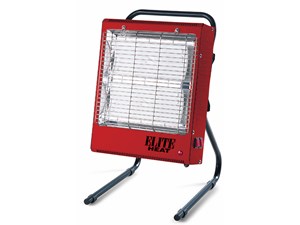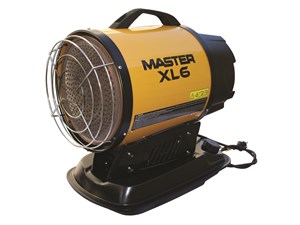
Cold Stress
Cold stress occurs when skin temperature, and eventually the internal core temperature of the body, reduces to a level which is dangerous for health. When the body cannot get itself warm (through shivering or movement), serious health issues or even death can occur.
As an environment becomes colder, the body must work more to maintain its temperature. This can become an issue if precautions aren’t taken and the effects of cold upon the body aren’t acted upon.
If cold conditions persist, the body’s blood flow will move from extremities such as hands and feet to the core of your body. This can expose the body to cold stress hazards such as frostbite, hypothermia, chilblains or even trench foot.
Cold stress is a serious issue and is common within the construction industry. The combination of working outside or without heating, and the physical nature of the job, can mean cold stress is hard to spot and difficult to remedy.
As a manager, it is important to protect workers from cold stress by:
- providing adequate heating in work and rest areas
- reducing exposure times to cold weather
- allowing longer breaks and providing proper break areas
- providing insulating, specialist clothing
As a worker, it is important to wear layered clothing, take breaks, and report any issues.
What are the Signs of Cold Stress?
Some signs are more subtle than others, but without you fully realising it you could be experiencing multiple symptoms of cold stress at work! Keep an eye out for these signs:
- Blue lips and fingers
- Confusion
- Reduced alertness
- Stiffness of muscles
- Shivering
Could I Get Cold Stress?
If you’re not careful, yes. According to studies, 5 million people die from temperature-related issues every year, with cold-related mortality seeing a majority of these. If you work in cold environments or find yourself working on a site outside over winter, the combination of wetness, wind and cold is a harsh reality.
Steps can be taken to reduce these risks, including more breaks, shelter and heaters which are suitable for work environments.
What Measures Can I Take to Avoid Cold Stress?
There are a number of strategies and protocols you can employ to reduce cold stress, which is even more effective if you combine them!
Clothing:
- Dress in layers. Keeping skin and layers waterproof is really important, and the more layers you have, the more likely the clothes on the skin are to stay dry
- Ensure clothing is baggy; it is a common misconception that it has to be tight. You need airflow to stay warm
- The first layer should be for the absorption of sweat
- A middle insulating layer should be applied which consists of wool, cotton, or a fleece
- Finally, an outer layer of waterproof clothing or material should be worn
- To keep feet warm and dry, two layers of socks may also be necessary. One later to absorb sweat and another to insulate, using the examples of materials above
- If you’re working in wet conditions, be sure to use waterproof footwear
- If it is dark, or you're working in dangerous conditions, reflective clothing over the top (such as jackets and gilets) will be needed
- Wear gloves, especially if you will need to touch potentially cold materials (such as metal ladders)
Workplace:
- Using heating equipment such as fuel heaters or radiant heaters in the workplace can warm the air, and keep workers from working in cold conditions.

- Protect workers from wind and weather by either utilising the workplace and location of work (if possible) or through the use of barriers
- Insulating material on equipment, especially equipment with metal handles that is used frequently
- Employ a buddy system so workers can keep an eye on each other and be aware for signs of cold stress
- Keep a Wind Chill Chart around your workplace alongside a thermometer so your team can observe any changes in temperature whilst observing the chart
Following these steps can be crucial in keeping yourself and your team warm, dry and safe throughout this long winter period.
If you have any questions about our equipment or services, please send an enquiry to your local Speedy depot.
- 2024
- 2023
- December 2023 (13)
- November 2023 (10)
- October 2023 (6)
- September 2023 (10)
- August 2023 (20)
- July 2023 (21)
- June 2023 (17)
- May 2023 (17)
- April 2023 (17)
- March 2023 (14)
- February 2023 (15)
- January 2023 (7)
- 2022
- December 2022 (6)
- November 2022 (12)
- October 2022 (24)
- September 2022 (14)
- August 2022 (12)
- July 2022 (15)
- June 2022 (18)
- May 2022 (14)
- April 2022 (9)
- March 2022 (5)
- February 2022 (5)
- January 2022 (2)
- 2021
- December 2021 (7)
- November 2021 (10)
- October 2021 (1)
- September 2021 (1)
- August 2021 (3)
- July 2021 (3)
- June 2021 (4)
- May 2021 (1)
- April 2021 (1)
- March 2021 (2)
- February 2021 (1)
- January 2021 (1)
- 2020
- 2019
- 2017
- 2016
- 2014
- 2013
- 2012
- 2011


